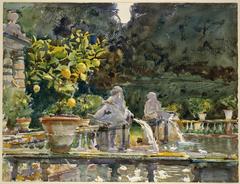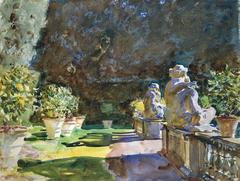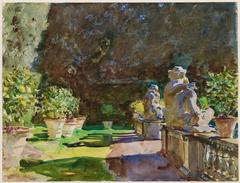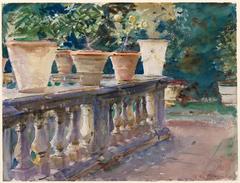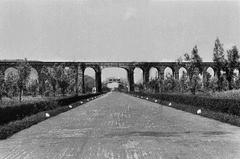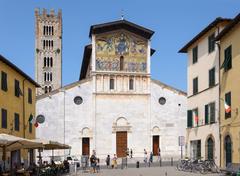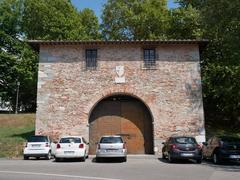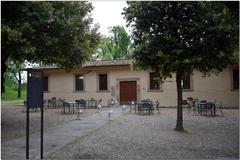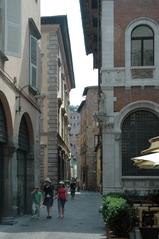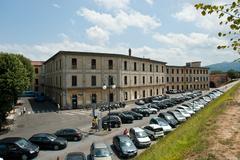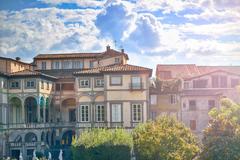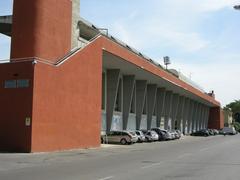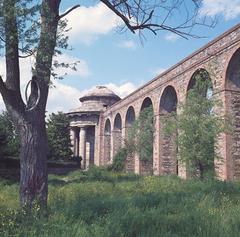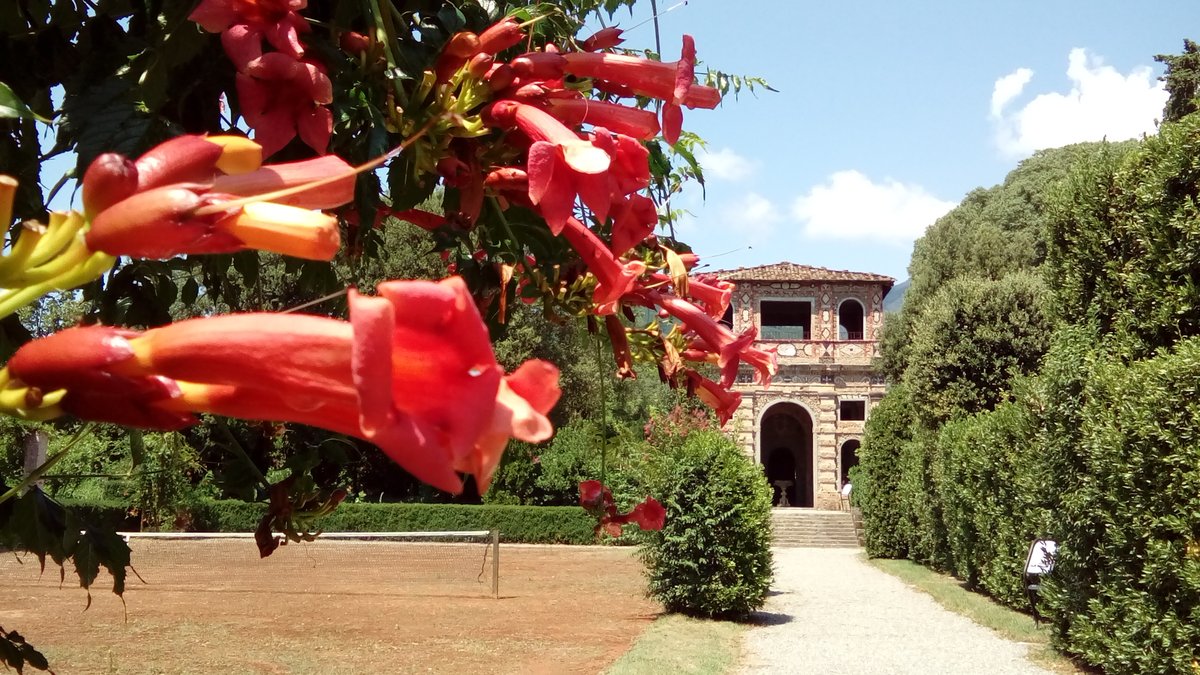
Villa Reale di Marlia: Visiting Hours, Tickets, and Historical Sites
Date: 19/07/2024
Introduction
Nestled in the picturesque region of Tuscany, Villa Reale di Marlia stands as a testament to centuries of rich history, architectural evolution, and artistic grandeur. This historical estate, located just outside Lucca, Italy, offers visitors a unique glimpse into the lives of noble families, artists, and royalty who once called it home. From its origins in the Lombard era, through the influential Buonvisi and Orsetti families, to its transformation under Elisa Bonaparte Baciocchi, the villa’s story is a captivating journey through time. Today, Villa Reale di Marlia is not only a cultural heritage site but also a vibrant destination that invites visitors to explore its stunning gardens, elegant interiors, and historical significance. Whether you’re a history enthusiast, an architecture aficionado, or simply someone looking to immerse yourself in Italian beauty, Villa Reale di Marlia promises an unforgettable experience. (Villa Reale di Marlia Official Website)
Table of Contents
- [Visiting Villa Reale di Marlia](#visiting-villa-reale-di-marliavisiting-villa-reale-di-marlia)
- [Historical Background and Significance](#historical-background-and-significancehistorical-background-and-significance)
- [Early History](#early-historyearly-history)
- [The Rise of a Noble Residence](#the-rise-of-a-noble-residencethe-rise-of-a-noble-residence)
- [The Buonvisi Era - A Golden Age](#the-buonvisi-era---a-golden-agethe-buonvisi-era---a-golden-age)
- [The Orsetti Family and Further Expansion](#the-orsetti-family-and-further-expansionthe-orsetti-family-and-further-expansion)
- [Elisa Bonaparte Baciocchi and Royal Grandeur](#elisa-bonaparte-baciocchi-and-royal-grandeurelisa-bonaparte-baciocchi-and-royal-grandeur)
- [Post-Napoleonic Era and Modern Times](#post-napoleonic-era-and-modern-timespost-napoleonic-era-and-modern-times)
- [Visitor Information](#visitor-informationvisitor-information)
- [Visiting Hours](#visiting-hoursvisiting-hours)
- [Tickets](#ticketstickets)
- [Guided Tours](#guided-toursguided-tours)
- [Special Events](#special-eventsspecial-events)
- [Travel Tips](#travel-tipstravel-tips)
- [Best Time to Visit](#best-time-to-visitbest-time-to-visit)
- [Photo Opportunities](#photo-opportunitiesphoto-opportunities)
- [Dress Comfortably](#dress-comfortablydress-comfortably)
- [Nearby Attractions](#nearby-attractionsnearby-attractions)
- [Accessibility](#accessibilityaccessibility)
- [FAQ](#faqfaq)
- [Historical Background and Significance](#historical-background-and-significancehistorical-background-and-significance)
- [Conclusion](#conclusionconclusion)
- [References](#referencesreferences)
Visiting Villa Reale di Marlia
Historical Background and Significance
The Villa Reale di Marlia, nestled in the heart of Tuscany, boasts a rich history spanning centuries, intertwined with noble families, artists, and even royalty. Its story offers a fascinating glimpse into the region’s vibrant past and the evolution of architectural and garden design.
Early History
The origins of the Villa Reale di Marlia can be traced back to the Lombard era (8th-10th centuries). Evidence suggests the existence of a fortified structure on the site, likely serving as a defensive outpost. Over time, as Tuscany transitioned from a period of conflict to one of relative peace and prosperity, the structure’s function evolved.
The Rise of a Noble Residence
By the 11th century, the property had transformed into a rural court under the ownership of the Bishops of Lucca. This marked the beginning of the estate’s journey towards becoming a grand residence. The bishops, wielding significant influence in the region, undertook renovations and expansions, gradually shifting the focus from defense to comfort and aesthetics.
The Buonvisi Era - A Golden Age
In the 16th century, the Villa Reale di Marlia witnessed a pivotal moment in its history when it came under the ownership of the Buonvisi family, wealthy merchants who played a significant role in Lucca’s silk trade. Recognizing the estate’s potential, the Buonvisi embarked on an ambitious project to transform it into a luxurious villa, a testament to their wealth and refined taste.
The Buonvisi family’s influence is most evident in the villa’s gardens. Inspired by the Renaissance spirit, they commissioned the creation of elaborate gardens adorned with fountains, sculptures, and intricate landscaping. This period marked the birth of the gardens as we see them today, a harmonious blend of nature and artistry.
The Orsetti Family and Further Expansion
Following the Buonvisi family, the villa changed hands several times, each owner leaving their mark on the estate. In the 18th century, the Orsetti family, another prominent Lucchese family, acquired the property. They undertook significant renovations, expanding the villa and adding new wings to accommodate their growing family and social circles.
The Orsetti family’s contributions are particularly noteworthy in the villa’s interior. They commissioned renowned artists and craftsmen to adorn the rooms with exquisite frescoes, intricate stuccowork, and elegant furnishings, reflecting the prevailing Rococo and Neoclassical styles of the time.
Elisa Bonaparte Baciocchi and Royal Grandeur
Perhaps the most illustrious chapter in the Villa Reale di Marlia’s history began in 1806 when it was acquired by Elisa Bonaparte Baciocchi, Napoleon Bonaparte’s sister and the Princess of Lucca and Piombino. Elisa, known for her refined taste and ambitious nature, envisioned transforming the estate into a regal residence fit for a princess.
Under Elisa’s direction, the villa and its gardens underwent a dramatic transformation. She commissioned renowned architects and landscape designers to remodel the existing structures and create new spaces that exuded grandeur and sophistication. The addition of a grand staircase, a theater, and a neoclassical chapel reflected Elisa’s desire to emulate the opulence of the French court.
Elisa’s influence extended beyond the villa’s walls. She expanded the estate’s parkland, incorporating surrounding properties and transforming the landscape into a sprawling English-style garden. This period saw the introduction of exotic plants, winding paths, and picturesque follies, creating a sense of wonder and discovery for visitors.
Post-Napoleonic Era and Modern Times
Following the fall of Napoleon, the Villa Reale di Marlia passed through various hands, including Spanish and Italian nobility. While each owner left their mark, the estate’s grandeur and historical significance remained intact.
In the 20th century, the villa was acquired by Count and Countess Pecci-Blunt, who dedicated themselves to restoring the estate to its former glory. They meticulously renovated the buildings, preserving the historical details while updating them for modern living. Their passion for the estate extended to the gardens, which they painstakingly restored based on historical documents and plans.
Today, the Villa Reale di Marlia stands as a testament to the vision and artistry of the many individuals and families who shaped its destiny. It serves as a cultural heritage site, offering visitors a captivating journey through time, showcasing the evolution of architecture, garden design, and the lives of those who once called this magnificent estate home.
Visitor Information
For those planning to visit, here is some essential information:
Visiting Hours
The Villa Reale di Marlia is open to visitors from 10:00 AM to 7:00 PM. Note that hours may vary during holidays and special events, so it’s always a good idea to check the official website before planning your visit.
Tickets
Ticket prices vary depending on the type of visit. General admission is €15, with discounts available for seniors, students, and groups. Children under 12 enter for free. Tickets can be purchased online or at the entrance.
Guided Tours
Guided tours are available for those interested in a more in-depth exploration of the villa’s history and gardens. These tours must be booked in advance through the official website.
Special Events
The Villa Reale di Marlia hosts various events throughout the year, including concerts, art exhibitions, and garden festivals. Check the official website for the event calendar and ticket information.
Travel Tips
- Best Time to Visit: The best times to visit are during the spring and autumn months when the gardens are in full bloom, and the weather is pleasant.
- Photo Opportunities: The villa and gardens offer countless photo opportunities. Popular spots include the grand staircase, the neoclassical chapel, and the picturesque garden follies.
- Dress Comfortably: Wear comfortable shoes and clothing, as you will be doing a lot of walking, especially if you plan to explore the extensive gardens.
Nearby Attractions
- Lucca Historical Sites: While in the area, consider visiting other historical sites in Lucca, such as the Guinigi Tower, the Cathedral of San Martino, and the ancient city walls.
- Pisa: Just a short drive away, you can also visit the famous Leaning Tower of Pisa and the Piazza dei Miracoli.
- Florence: About an hour away by car or train, Florence offers a wealth of art, history, and culture to explore.
Accessibility
- Parking: Ample parking is available on-site for visitors traveling by car.
- Wheelchair Access: The villa and gardens are wheelchair accessible, with ramps and pathways designed to accommodate all visitors.
- Facilities: Restrooms and refreshment areas are available throughout the estate.
FAQ
- What are the visiting hours for Villa Reale di Marlia? The villa is open from 10:00 AM to 7:00 PM. Check the official website for any variations.
- How much are the tickets for Villa Reale di Marlia? General admission is €15, with discounts for seniors, students, and groups. Children under 12 enter for free.
- What attractions are near Villa Reale di Marlia? Nearby attractions include the historical sites of Lucca, the Leaning Tower of Pisa, and the city of Florence.
Conclusion
Villa Reale di Marlia is a living testament to the rich tapestry of Tuscany’s history, culture, and artistry. From its early days as a fortified structure in the Lombard era to its transformation into a luxurious villa under the Buonvisi and Orsetti families, and its subsequent grandeur under Elisa Bonaparte Baciocchi, the estate has continuously evolved, reflecting the tastes and aspirations of its various owners. Today, the villa and its meticulously maintained gardens offer visitors a unique opportunity to step back in time and experience the elegance and grandeur of a bygone era. The estate’s commitment to preserving its historical integrity while providing modern amenities ensures that every visit is both educational and enjoyable. Whether you’re exploring the opulent rooms, strolling through the picturesque gardens, or attending one of the many cultural events hosted on-site, Villa Reale di Marlia is a destination that truly captures the essence of Tuscany’s enduring charm. (Villa Reale di Marlia Official Website)
References
- Visiting Villa Reale di Marlia - History, Tickets, and Tips. (2024). Retrieved from Villa Reale di Marlia Official Website
- Explore Villa Reale di Marlia - History, Tickets, and Visiting Hours. (2024). Retrieved from Villa Reale di Marlia Official Website
- Visiting Villa Reale di Marlia - Hours, Tickets, and Travel Tips. (2024). Retrieved from Villa Reale di Marlia Official Website



